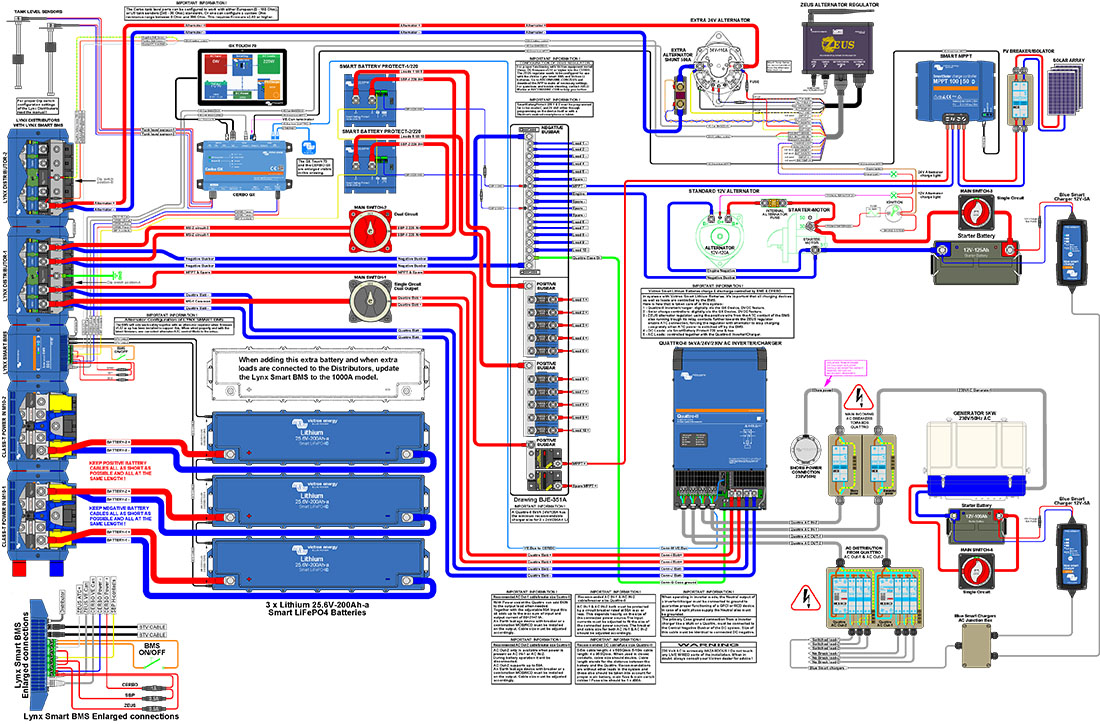Can someone please provide a pointer to the location on Victron's site of the full resolution version of this diagram (attached)? I've hunted by various means and can't find it. It shows an Arco Zeus alternator regulator integrated into a Victron battery storage system.
I will ask a separate question about how the battery voltage sensing wires from the Arco Zeus need to be connected to the Victron system. I'm hearing that holes should be drilled into the Smart Shunt?? No thanks!

